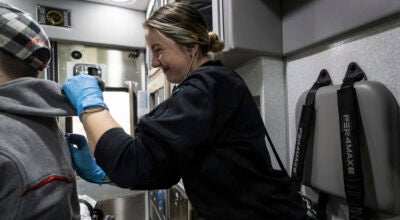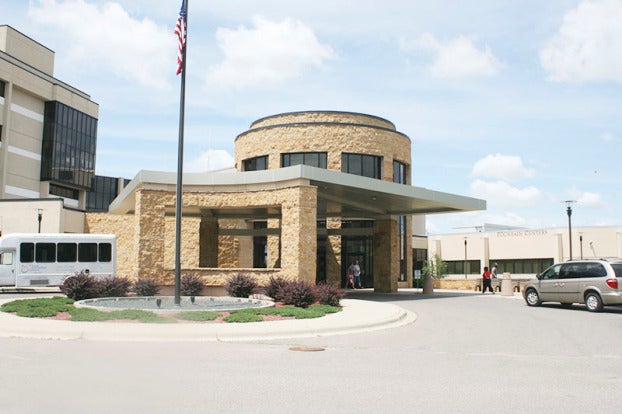Daily COVID-19 update: 1 new case in Freeborn County; statewide hospital admissions hit new high
Published 11:59 am Tuesday, November 10, 2020
|
Getting your Trinity Audio player ready...
|
By Albert Lea Tribune and Minnesota Public Radio News
COVID-19 continues its grim November ascent. State health officials on Tuesday reported 4,906 newly confirmed or probable cases, and 23 more deaths.
New hospital admissions tied to COVID-19 hit a new one-day record high, 262. More than 1,200 people are in Minnesota hospital beds now with nearly 250 needing intensive care.
The newest numbers come as Gov. Tim Walz readies new restrictions on bars, restaurants and big events to try and stem the disease’s spread. He’s expected to address Minnesota at 2 p.m.
The disease’s rampant spread is being fueled by informal gatherings and get-togethers with family and friends, transmitted unknowingly by people who have the virus but do not have symptoms, officials say.
Of the 189,681 confirmed or probable cases identified in the pandemic to date, about 81 percent have recovered to the point they no longer need to be isolated.
The deaths reported Tuesday raised Minnesota’s toll to 2,698. Among those who’ve died, about 69 percent had been living in long-term care or assisted living facilities; most had underlying health problems.
Freeborn County Public Health reported Tuesday there is one new lab-confirmed case of COVID-19 reported by Minnesota Department of Health today. The total count of positive Freeborn County cases is now 901, as some people were moved to other counties, the press release stated. This person is in their 30s. There are now 122 active lab confirmed cases in Freeborn County.
There are now seven people currently hospitalized with a total of 54 hospitalizations.
There have been a total of five deaths as a result of COVID-19 in Freeborn County. Today in Minnesota there are 189,681 total cumulative positive cases, with 4,906 new cases and 153,347 out of isolation.
The following is an update on other area counties, as per the MDH:
• Faribault County: 10 new cases
• Mower County: Seven new cases
• Steele County: Eight new cases
• Waseca County: Four news cases
Caseloads rising across age groups
New cases are up dramatically over the past six weeks in all age groups.
People in their 20s still make up the age bracket with the state’s largest number of confirmed cases — nearly 40,000 since the pandemic began, including nearly 22,000 among people ages 20-24.
The number of high school-age children confirmed with the disease has also grown, with more than 15,600 total cases among children ages 15 to 19 since the pandemic began.
Those numbers help explain why experts remain particularly concerned about teens and young adults as spreaders of the virus.
While less likely to feel the worst effects of the disease and end up hospitalized, experts worry youth and young adults will spread it to grandparents and other vulnerable populations. It’s especially concerning because people can have the coronavirus and spread COVID-19 when they don’t have symptoms.
Virus surges in swaths of rural Minnesota
Regionally, central and northern Minnesota have driven much of the recent increase in new cases while Hennepin and Ramsey counties show some of the slowest case growth in the state.
Collectively, rural areas of Minnesota continue to report the most new COVID-19 cases. Northwestern Minnesota no longer has the state’s fastest-growing outbreak. It’s been passed by east-central Minnesota. But new cases are rising at accelerating rates everywhere.
Northern Minnesota, once the region least affected by the disease, has also seen its caseload grow dramatically in recent weeks.
Latino cases jump
In Minnesota and across the country, COVID-19 has hit communities of color disproportionately hard in both cases and deaths.
That’s especially true for Minnesotans of Hispanic descent. They, along with Black Minnesotans are also being hospitalized and moved to intensive care units at higher rates than the overall population.
Similar trends hold true for Minnesota’s Indigenous residents. Counts among Indigenous people jumped in October relative to population.
October data also show newly confirmed cases accelerating among Latino people in Minnesota.
Distrust of the government, together with deeply rooted health and economic disparities, have hampered efforts to boost testing among communities of color, particularly for undocumented immigrants who fear their personal information may be used to deport them.
‘Our behavior is driving this’
About 1,000 people are in Minnesota hospital beds now from COVID-19, including more than 200 needing intensive care. New hospital admissions continue to rise to new records, with the current seven-day average running at 176 per day.
The newest numbers come after a week of record case increases — more than 31,000 new cases reported since last Monday — as hospitalizations and deaths climbed steeply. A tough October became a brutal first week of November.
“Our behavior is driving this … literally thousands and thousands of small decisions happening around Minnesota that are the issue here,” Minnesota Health Commissioner Jan Malcolm said Friday.
The deaths reported Monday raised Minnesota’s toll to 2,675. Among those who’ve died, about 69 percent had been living in long-term care or assisted living facilities; most had underlying health problems.
‘Minnesota is in a bad spot’
The overall numbers continue to paint a troubling picture of a rapidly worsening pandemic in Minnesota. The latest numbers continue to show rampant spread across Minnesota, not limited to just one region or demographic group, like earlier in the pandemic.
There’s increasing concern about the ability of hospitals to handle more. They were already filling in the summer and fall from normal use, and the surge in COVID-19 patients is putting hospitals in the Twin Cities “near the top of their capacity,” Malcolm said last week.
Staffing is becoming a challenge as more health care workers get sick, she added.
“Minnesota is in a bad spot … and it’s going to get worse before it gets better,” Ehresmann told reporters.
While more testing is uncovering more cases, “it’s not the testing that’s the problem,” Ehresmann said. “It’s the sheer fact that we have so much virus circulating in our state.”




